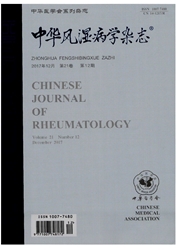

 中文摘要:
中文摘要:
目的在大肠杆菌中表达小鼠组氨酰tRNA合成酶(HARS)与麦芽糖结合蛋白(MBP)融合基因,通过亲和层析纯化以获得具有抗原特异性的重组蛋白。方法提取C57BL/6小鼠肌肉组织总RNA,反转录为cDNA,利用软件设计一对特异性引物,扩增HARS基因上游591对碱基序列。对扩增产物和载体质粒pMALc-5e分别进行双酶切,再用T4连接酶连接得到重组质粒。将其转化大肠杆菌感受态细胞,挑取单克隆培养并鉴定质粒序列。异丙基-β-D硫化吡喃半乳糖苷(IPTG)诱导融合蛋白表达后亲和层析纯化,聚丙烯酰胺凝胶电泳对融合蛋白进行相对分子质量粗鉴定,蛋白印迹法鉴定抗原特异性。结果重组HARS—MBP融合蛋白基因在大肠杆菌胞质中高效表达,亲和层析纯化后的融合蛋白与预测相对分子质量66000相符,与抗体具有良好的特异结合能力。结论小鼠HARS-MBP融合基因能够在大肠杆菌中稳定高效地表达,表达的蛋白具有良好的抗原特异性,为后续炎性肌病的研究提供了基础。
 英文摘要:
英文摘要:
Objective To express the recombinant mouse histidyl-tRNA synthetase (HARS) and maltose binding protein (MBP) gene in Escherichia coli and obtain the purified protein which possesses antigen specificity. Methods Total RNA was extracted from the myocytes of C57BL/6 mouse and reversely transcripted to cDNA. The gene of N-terminal origin of 591 base pairs was amplified, then cloned into pMALc- 5e vector. The recombinant plasmid was transformed into Rosetta-gami B, then IPTG was used to induce the expression of HARS-MBP. Fusion protein was purified by affinity chromatograph. The molecular weight (MW) of HARS-MBP was roughly determined by SDS-PAGE. The antigen specificity was identified by Western blotting using anti-Jo-1 serum from patients, commercial anti-HARS and anti-MBP antibodies. Results The recombinant HARS-MBP protein gene was efficiently expressed in Escherichia coli, and the MW was consistent with predicted MW of 66 000. The fusion protein was specifically combined with its antibody. Conclusion The HARS-MBP fusion protein could be efficiently and steadily synthesized in Escherichia coil, which shows satisfactory antigen specificity and provides the key requirement for making a deep study of HARS in the pathogenesis of idiopathic inflammatory myopathy(IIM) and animal modeling of IIM.
 同期刊论文项目
同期刊论文项目
 同项目期刊论文
同项目期刊论文
 Anti-MDA5 antibody is associated with A/SIP and decreased T cells in peripheral blood and predicts p
Anti-MDA5 antibody is associated with A/SIP and decreased T cells in peripheral blood and predicts p 期刊信息
期刊信息
